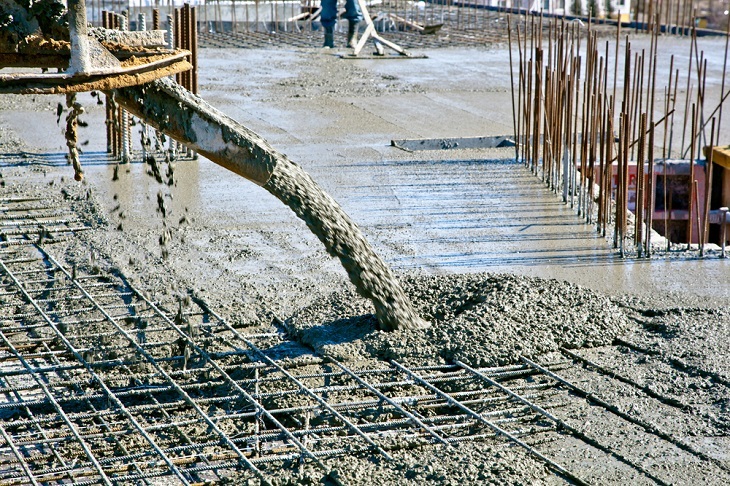There are 4 types of Concrete reinforcement steel supplies that are used in concrete structures:
- The Hot Rolled Deformed Bars for Concrete Reinforcement Steel Supplies: This is a very common type of reinforcement for the regular RCC structures. The Hot rolling is performed in the mills that involve providing it deformations on its surface i.e. the ribs so that it can form a bond with the concrete. The stress-strain curve reflects a distinct yield point which is also followed by a plastic stage in which the strain increases without any increase in the stress. This is also followed by the strain hardening stage. This has typical a tensile yield strength of around 60,000 psi.
- The Mild Steel Plain Bars: These are plain Concrete reinforcement steel supplies and do not have any ribs on their surface. They are used in the small projects where the economy is a real concern. As the plain bars cannot be bound naturally together with concrete, hence the hooks have to be given at the ends. In this particular type of steel to stress-strain curve reflects a distinct yield point which is followed by a plastic stage in which the strain increases without an increase in the stress. This process is followed by a strain in the hardening stage. The plastic stage in Mild Steel Bars is all the more pronounced than the Hot Rolled Deformed Bars. The typical tensile yield strength is approximately 40,000 psi.

Reinforcement Steel Supplies - The Cold Worked Concrete Reinforcement Steel Supplies: When the hot rolled steel bar undergoes the process of the cold working, then cold work reinforcement gets created. The cold working includes twisting or drawing of the bars at the room temperature. Reinforcement steel supplies effectively remove the plastic stage as depicted in the stress-strain curve, although it does give better control over the size as well as the tolerances of the bars. Due to the removal of the plastic stage, it has a lower ductility than the hot rolled bars. It is used only in specific kinds of projects where low tolerances, as well as straightness, are a major area of concern. The stress-strain curve here does not reflect a distinct yield point as the plastic stage is totally eliminated. Typical tensile yield strength is 60,000 psi.
- The Prestressing Steel: The Prestressing steel is made of use in the form of the bars or the tendons that are created using multiple strands, however, the tendons/strands are constantly used as they can be laid in various profiles, that’s the primary requirement of the prestressing steel. The prestressing strands are created by using multiple wires (generally 2, 3 or 7 wire strands). A typical seven wire strand is made from six wires that are spun around the seventh wire that has a little larger diameter, thus creating a helical strand. The wires are cold drawn and they have a very high tensile ultimate strength which is typically 250,000 – 270,000 psi. This high tensile strength allows it to effectively prestress the concrete even after it has undergone short term as well as long-term losses. They are used in the prestressed concrete in the construction of the bridges or the prestressed slabs in the buildings. The prestressing steel is even available in the form of non-bonded strands which are encased in the PVC sheath. The prestressing strands are even available as the Low Relaxation Strands that exhibit low relaxation losses even after prestressing. They are typically used in prestressing members having large spans.

